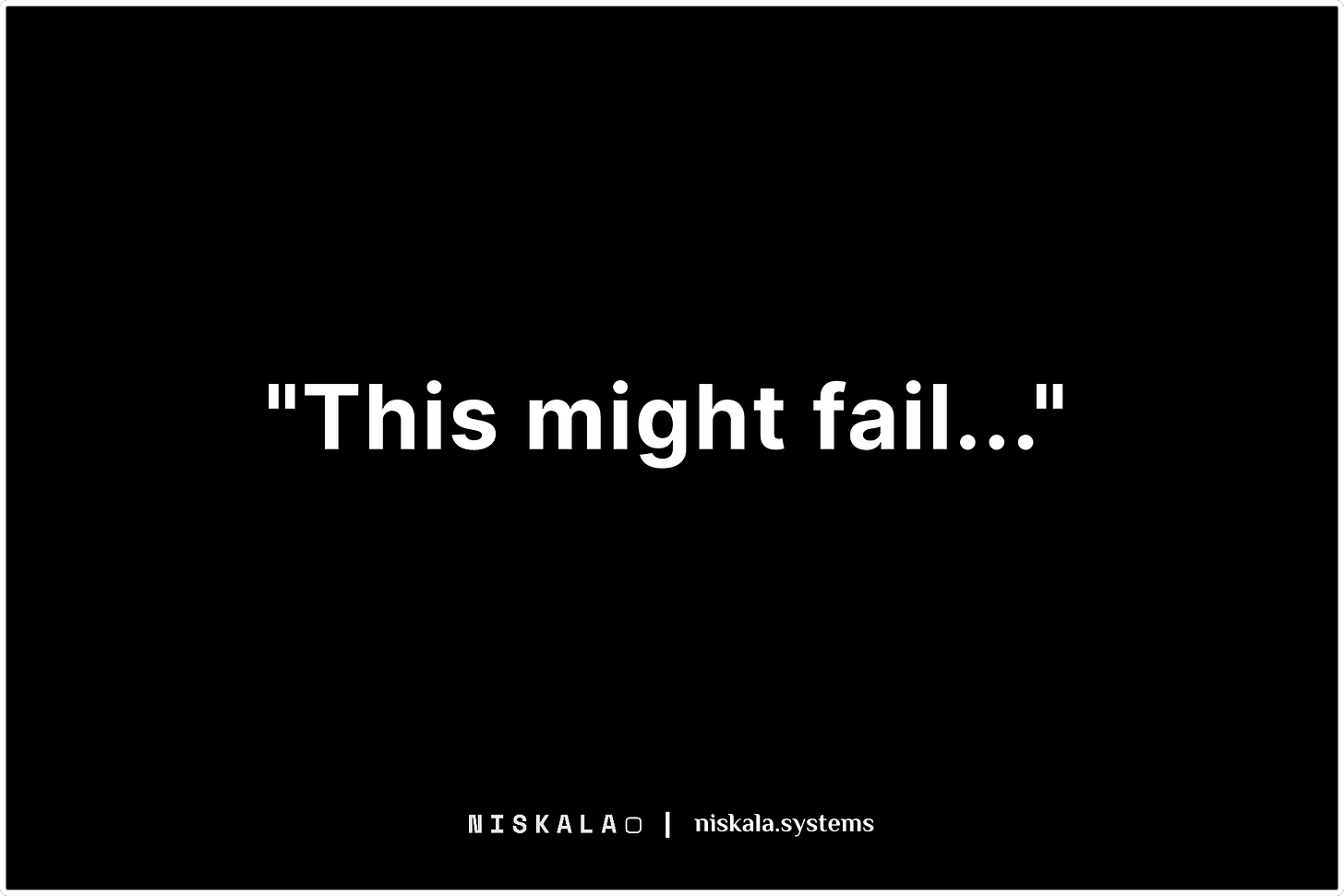Why Acknowledging Doubts Can Build Trust?
When “I’m not sure” becomes the strongest sentence in your arsenal
The Paradox of Certainty
We’ve been sold a lie: that trust requires ironclad confidence. Watch any TED Talk, corporate training video, or political debate—you’ll see performers competing to out-certain each other. But here’s what they’re not telling you: Unwavering certainty triggers our bullshit detectors.
Our brains evolved to distrust perfection. When someone claims 100% confidence about complex issues—climate models, vaccine efficacy, market forecasts—we instinctively question their motives. Not because we’re cynical, but because we’re hardwired to spot mismatches between claims and reality. A 2023 MIT study found that messages containing phrases like “the data suggests” and “current evidence points to” were 37% more persuasive than declarations of absolute truth. Uncertainty, it turns out, smells like honesty.
This isn’t about playing humble. It’s about strategic calibration. Imagine two doctors:
Doctor A: “This treatment will work.”
Doctor B: “This works for 83% of patients like you. Let’s monitor weekly and adjust.”
Both might be equally competent. But Doctor B’s admission of uncertainty paradoxically increases perceived expertise. Why? Because they’re demonstrating they understand the complexity of the system. They’re not selling snake oil—they’re inviting you into the messy reality of problem-solving.
Cognitive Dissonance as a Trust Accelerator
Here’s where it gets weird: When someone admits doubt, it creates a psychological vacuum. Our brains rush to fill the gap. This is the certainty reciprocity effect. By revealing your uncertainties, you’re not showing weakness—you’re activating the listener’s problem-solving instincts.
Think of it like a puzzle with missing pieces. When you say “I’m torn between X and Y,” you’re handing the other person a mental jigsaw. They’ll instinctively start fitting their own assumptions into your gaps, creating collaborative ownership of the conclusion. Ever notice how the best therapists say little but get patients to arrive at insights “on their own”? Same principle.
Try this experiment:
Next team meeting, preface your proposal with “I’m 70% confident this works—what am I missing?”
Watch how objections soften. Colleagues shift from combat mode to co-conspirators.
Note how your eventual decision carries more collective buy-in.
You’ve just hacked group dynamics. By admitting partial uncertainty, you’ve lowered defensive barriers and turned critics into collaborators. The math is brutal: 100% certainty = 100% responsibility for failure. 70% certainty = shared investment in success.
Tactical Vulnerability: A Field Manual
Let’s get practical. How do you apply this without sounding like a waffling politician? Three rules:
1. Map the Doubt Spectrum
Not all uncertainties are equal. Distinguish between:
Foundational doubts (core beliefs worth examining)
Procedural doubts (methods that could be improved)
Contextual doubts (external factors beyond your control)
Example: A project manager might say, “I’m confident in our timeline (foundational), but I’m debating whether to use Supplier A or B (procedural), and the shipping strikes could push everything back (contextual).” This tiers your certainty, showing discernment rather than indecision.
2. Time Your Admissions
Doubt has expiration dates. Early in relationships? Lead with curiosity. (“I’m still learning how this team operates—help me understand your priorities.”) During crises? Acknowledge shared uncertainty. (“None of us have seen a situation like this—let’s figure it out together.”) Post-crisis? Use doubt to prevent complacency. (“This worked last time, but here’s why I’m nervous about repeating it.”)
3. Doubt in Stereo
Pair every uncertainty with a compensating strength:
“I don’t know the answer, but I know how to find it.”
“This might fail, but here’s our backup plan.”
“I’m not the expert here, but I’ve lined up three who are.”
This creates a dynamic tension—a narrative of growth rather than limitation. You’re not just admitting gaps; you’re demonstrating adaptive intelligence.
Case Study: The Power of “Controlled Burns”
In 2021, a major cybersecurity firm faced a PR nightmare: Their “unhackable” software got hacked. Competitors pounced. Clients panicked. The CEO’s response became a masterclass in doubt-as-trust:
Day 1: “We failed. Our claims of invulnerability were arrogant.” (Foundational doubt)
Day 3: “We’re sharing all breach details publicly—help us strengthen these systems.” (Procedural doubt as invitation)
Day 7: “We’ll never claim perfection again. Security is a race without finish lines.” (Contextual doubt as philosophy)
Result? Client retention increased by 22%. Why? The company transformed from infallible authority to humble partner. They turned customers into allies against a shared enemy: complacency.
Contrast this with a competing firm that hid a smaller breach. When exposed, their stock plummeted 40% in a week. The lesson: Early, voluntary doubt disclosure acts as a trust vaccine. It inoculates against future crises by proving your transparency isn’t situational.
The Dark Side of Doubt: When to Hold Back
This isn’t a free pass for constant hemming and hawing. Strategic uncertainty requires discipline:
Danger Zones
Core competencies: If you’re a pilot, don’t say “I’m kinda iffy on landing procedures.”
Emergencies: People need clear directives during fires—literal or metaphorical.
Repeat doubts: Expressing the same uncertainty repeatedly reads as incompetence, not honesty.
The sweet spot? Frame doubts as temporary and solvable. “I don’t know… yet.” “We’re uncertain… but here’s how we’ll find out.” This maintains forward momentum while acknowledging reality.
Future-Proofing Trust in the Age of AI
Here’s where things get existential. As deepfakes and ChatGPT make authenticity scarcer, human doubt becomes a premium currency. Machines can mimic confidence perfectly—they can’t replicate the messy, endearing process of human uncertainty.
Your assignment: Start practicing “doubt transparency” in low-stakes scenarios. At the grocery store: “I’m terrible at picking melons—got any tips?” In emails: “I might be missing something here—am I on the right track?” Each micro-admission trains your brain to associate vulnerability with connection, not weakness.
Remember: Trust isn’t built by eliminating doubt. It’s built by proving you can navigate doubt together. The most resilient relationships aren’t held together by unshakable certainty—they’re woven from threads of “I don’t know,” “Let’s find out,” and “We were wrong, but…”
In the end, that’s where real trust lives: not in answers, but in the courage to keep questioning.



